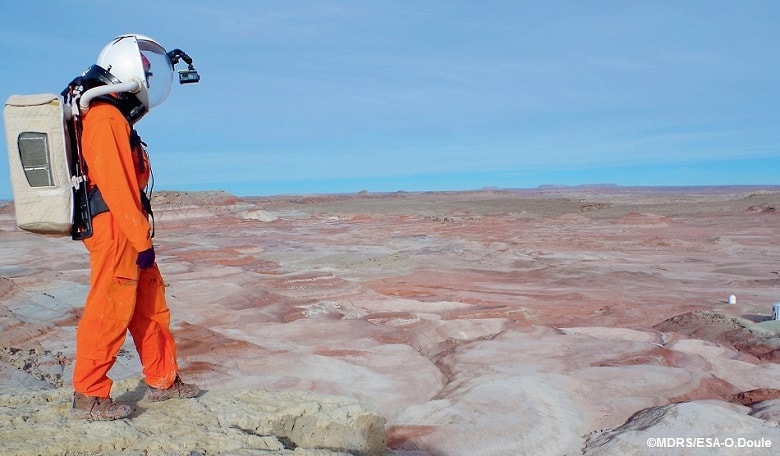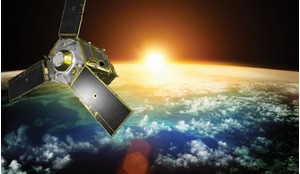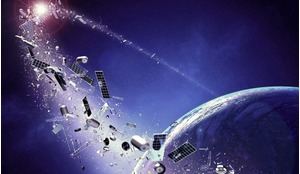By the end of the 1960s, following the euphoria of the Apollo 11 Moon-landing success, Wernher von Braun seriously anticipated NASA launching a human Mars mission by the end of the 1980s. The huge costs precluded that hope: the current estimated figure of $100 billion for a four-crew expedition is a serious challenge to single governments like the USA, Russia or China ever taking on this extraordinary venture alone.
In more recent years the private sector has been putting forward new ideas. These include the daring Mars One pioneer settler one-way trip and the Inspiration Mars Foundation flyby proposal for 2018 and beyond.
But are there serious physical and psychological crew challenges to these ambitious Mars expedition ventures that have not yet been fully overcome? And might solving them add hugely to the cost or even delay the missions for at least a generation?
NASA is effectively committed to human flights to Mars. In 2010, President Obama announced that he expected NASA to send a crew to at least orbit the red planet by the mid 2030s, with landings occurring “in his lifetime”.
At present the architecture for NASA’s flyby approach would involve using Orion four-seater launch and re-entry capsules, attached to in-flight habitat modules either using inflatable designs or Automated Transfer Vehicle-type units. Personal space will be very limited, radiation storm shelter provision relatively lightweight and there is no likelihood of artificial gravity being possible for these early flights. The physical challenges for the crews spending 12–18 months in zero gravity during the voyage to Mars and back will be considerable. Equally important, however, will be the psychological impact of such a flight on the crew and their family.
While the intrepid Apollo astronauts ventured into cislunar space beyond orbital distances, they were only three days from the Earth and could, mostly, actually see the small but real planetary disk from their windows. For flights to Mars, the travel distances involved are immense and seeing the Earth become a small and then a tiny blue dot during the journey out may have an unknown impact on the psyche of the selected crews.
Following 50 years of human spaceflight experience, the 500 or so men and women who have ventured into space have been carefully studied both during and after their flights in zero gravity. Detailed biomedical research on board the International Space Station (ISS) during the last 10 years has revealed much about the behaviour of the human body in this strange world of micro-gravity that is of direct relevance to potential Mars missions. ISS crews are soon to extend their stays from the current six-month expedition length to over 12 months to understand more fully the medical consequences of living in space and undertaking flights to deep space and Mars.
The initial impact of zero gravity, first experienced by Vostok cosmonaut Herman Titov back in 1961, is called space adaptation syndrome (SAS). This is where the vestibular system reacts, resulting in poor coordination, slow movements and nausea. Generally this will go away after 72 hours and can be alleviated by the use of drugs.
ESA astronaut Alexander Gerst using the International Space Station’s Advanced Resistive Exercise Device to keep fit. Astronauts need to spend up to two hours each day working out to counteract the loss of bone and muscle fibre. Pneumatic resistance is used in place of the weights found in traditional gym equipment
However, a much more serious effect of lack of gravity on the human body is the loss of bone density and muscle mass. Astronauts could potentially suffer an almost osteoporosis-type consequence where calcium leaches out of bone mass and enters the blood stream. Without taking exercise, the effects can be dramatic. For example, rats sent into space have suffered a loss of bone density of almost a third during a 10-day zero-g flight without exercise. For the human body, increased calcium in the bloodstream could lead to renal stones, constipation and possible effects on the central nervous system, with resulting lethargy and depression, if unchecked.
Astronauts on the ISS may need to undertake up to three hours of daily exercise to stay healthy and avoid lasting consequences. For the Mars flight analogy, crews will need to train more heavily as their landing phase approaches, with initial surface operations carefully limited, despite Martian gravity being only 38 per cent of that of the Earth.
Real and present dangers
Other consequences of lack of gravity include a reduction in red blood cell production plus a loss of immune resistance. As bacteria and mould growth appears to increase in spacecraft during zero gravity, great care will be required regarding hygiene and diet protocols.
As the Mars expedition flies beyond low-Earth orbit and its protective magnetic field, so the astronauts’ exposure to dangerous ionising radiation will occur. Solar flares, coronal mass ejections (CMEs) and cosmic rays will threaten the astronauts’ acceptable radiation level, with the increased risk of cancer occurring. Measurements made during the 2011–12 transit flight of the Mars Science Laboratory probe via the unshielded radiation assessment detector experiment showed a total received radiation dose of 0.66 sievert. This is significant, as NASA’s limit for the maximum radiation dose throughout an astronaut’s career is currently set at 1.00 sievert.
The dangers are real and present. Shortly after the Apollo 16 flight to the Moon returned in 1972, for example, a massive CME occurred and a near fatal dose would have been suffered by the crew had their mission occurred during that period. To protect the Mars travellers, heavy shielding via ‘storm shelters’ will be needed that make use of the core of the spacecraft interior, possibly surrounded by stored water and oxygen tanks,together of course with accurate space weather warnings.
Another particular medical issue faced by astronauts that is now better understood, following a 2012 NASA study, is the damage that can occur to visual acuity following prolonged zero gravity. Known as the visual impairment and intracranial pressure (VIIP) problem, this condition arises because of the cerebro-spinal fluid around the brain increasing in pressure and impacting on the optic nerve sheath. Several ISS astronauts have noted a sudden drop in visual ability. The chief scientist at NASA’s Johnson Space Center says of this issue: “This is one that we don’t yet have a handle on and it could be a show-stopper.”
Volunteers during an ESA bedrest study exploring the impact of a high-protein, high-salt diet on bone and muscle loss
As well as these space-specific health issues, over the course of an 18 to 24-month Mars mission astronauts will also have to deal with the normal daily health problems that affect us all. To be selected as an astronaut, candidates must usually be aged under 40 and meet basic health requirements, such as 20/20 correctable vision, no colour blindness and blood pressure of less than 140/90. However, while selected astronauts are very fit, having been screened intensively for any underlying or potential medical conditions, particularly cardio-vascular issues, inevitably dental and intestinal problems will occur during the long flight period.
To protect the Mars travellers, heavy shielding via ‘storm shelters’ will be needed that make use of the core of the spacecraft interior
Illnesses have occurred on space flights, including heartbeat irregularities: Mir cosmonaut Vasily Tsiblyev suffered heart scare issues on his mission in 1997, after the Progress supply ship collision mishap. Allied to this could be accidental bone fractures and muscular strains. Ground controllers can assist, but it is important that crew members can carry out basic medical procedures themselves. One of the crew may need to be a qualified doctor able to undertake basic surgical operations.
The list of stress factors that will be presented to Mars missions crews is long and, for many, formidable. As well as loneliness and isolation, the astronauts will face physical deprivation, including limited space, noise stress from air conditioners and fans cooling electronic equipment, limited basic personal cleaning, sleep issues (NASA surveys show that two thirds of ISS astronauts report sleep difficulty), plus of course the ever-present worry of damage to the spacecraft or systems failures. Even the experienced and hardened Apollo 12 moonwalker Alan Bean admitted to this after his Apollo and Skylab missions: “I felt real fear out there, particularly when thinking of dangers such as window failure and depressurisation.”
University of Southern California medical anthropologist Lawrence Palinkas has looked at the mental strain of isolation and danger in polar explorers. He believes NASA and other space agencies could learn from this: “About 40–60 per cent of polar explorers experience ‘polar madness’ due to seeing the same people day after day,” he says.
Team dynamics
One solution, proposed by Dartmouth Medical School physiologist James Carter, is ‘silicon psychiatrists’ – computers that assess how an individual astronaut is performing in flight. Voice stress recognition experiments are now being seriously considered for the ISS and these could be applied for the Mars mission. The Moscow-based Institute for Biomedical Problems (IBMP) has joined with the University of London’s Centre for Space Medicine to develop this further.
Crew members need to be team players, but at the same time individuals that are comfortable relying on themselves and can function autonomously, without constant guidance
However, having time available on a long-duration mission can have its advantages. Crew, who are inherently high achievers and highly motivated individuals, might like to learn a new language or skill from crew mates or through an e-learning facility. Human beings in general have the capability to take positive aspects from what others might consider a terrible situation or circumstance. Space travel might suit and even benefit a selected few more than others.
In terms of the dynamics and social cohesion of the crew, astronaut selection procedures will have sifted out most individuals who are poorly suited to long-duration missions. Crew members need to be team players, but at the same time individuals that are comfortable relying on themselves and can function autonomously, without constant guidance. Good communication skills and a sense of humour are also obvious qualities for a successful astronaut. However, stress and personal issues will always throw up odd situations, confounding astronaut selection psychological testing.
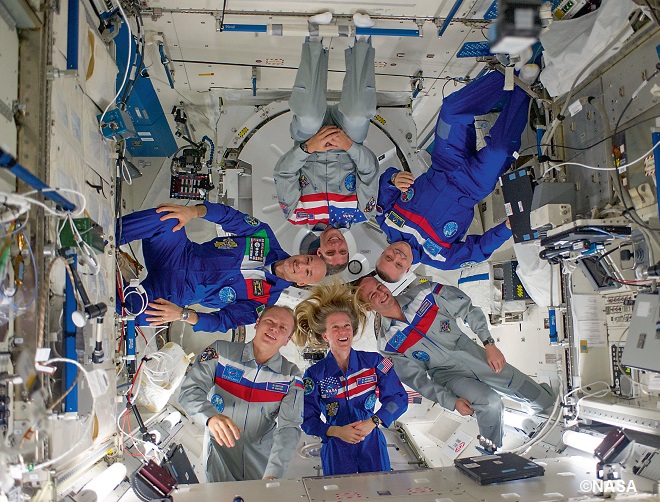 ISS Expedition 37 crew portrait inside the Kibo laboratory. The extreme isolation of deep space adds further stress on mental health. Leadership strength has been shown to be a key component in maintaining health and morale in these circumstances 34 ROOM Astronautics ©NASA
ISS Expedition 37 crew portrait inside the Kibo laboratory. The extreme isolation of deep space adds further stress on mental health. Leadership strength has been shown to be a key component in maintaining health and morale in these circumstances 34 ROOM Astronautics ©NASA
Comparisons can be made with other isolated groups, such as nuclear submarine crews and Antarctic researchers. But deep space may be more akin to extreme isolation such as that experienced by the 33 Chilean miners trapped at Copiapo mine in 2010. The miners stayed fit and mentally healthy for 69 days, 700 metres below ground, before being rescued. While the group adhered to a democratic voting system for key decisions, interestingly it was the leadership strength of the mine foreman, Luis Urzua, that kept the group together and in good spirits.
It may well be that some form of artificial gravity is needed to keep astronauts on long missions healthy and able to undertake exploration on the Martian surface
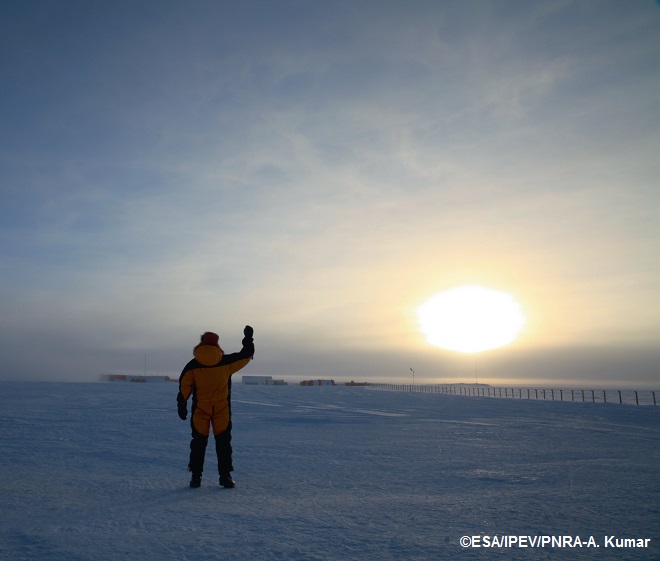 The station at Concordia in Antarctica is the closest thing on Earth to interplanetary exploration. ESA is studying the effects of isolation there to prepare for a mission to Mars
The station at Concordia in Antarctica is the closest thing on Earth to interplanetary exploration. ESA is studying the effects of isolation there to prepare for a mission to Mars
While a Mars crew will be a peer group in many respects, a crew commander and deputy would seem the likely structure, as occurs with the six-person ISS. What should be the best composition of the team? Debates are ongoing as to whether all-male, all-female, mixed, married and single, or even established couple crews would work best.
The Mars-500 experiment in Moscow at the IBMP provides useful information for crew constituency studies. Six men from a wide international grouping were isolated for 520 days in a simulated Mars mission in 2010–11. All appeared healthy and content at the end of the period with no conflict situations reported, although four of the six had sleep difficulties and several appeared to avoid exercise and social contact.
The key issue identified with the Mars-500 group was the lack of instant communication with friends and family. The team considered that the realistic Mars mission time delay for conversations from three to 22 minutes was very significant to them. For some it was even more important than a view through a window of the sky and the Earth.
The experience gained on the ISS, particularly for 12-month expeditions, will further reveal how to address the zero-g medical issues, protection from radiation and in particular VIIP and its effect on distance and near vision. It may well be that some form of artificial gravity is needed to keep astronauts on long missions healthy and able to undertake exploration on the Martian surface. This has weight consequences though and would not be undertaken unless it is vital.
From the social and psychological aspects, the crew selection process needs refinement. Development of positive crew and family support techniques and technologies needs further study. In the future, reliable remote analysis of crew well-being, as individuals as well as a team, would need to be carried out continuously. Consequently, the specialist ground support teams for Mars missions will have plenty to occupy them to support such remarkable flight





